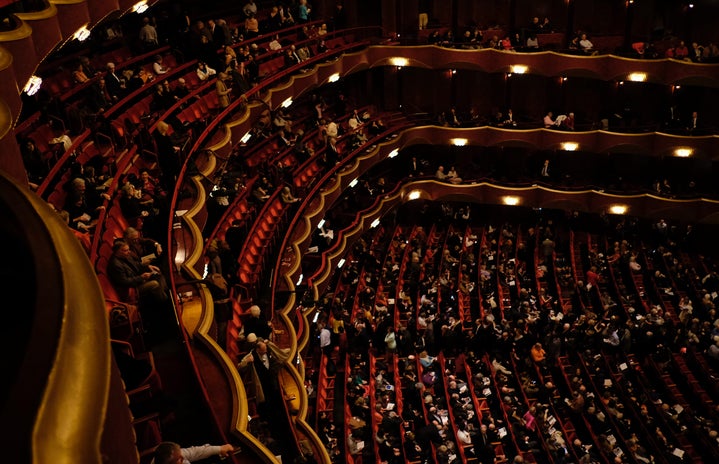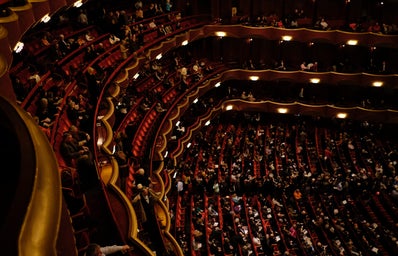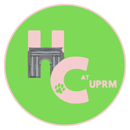“Come on in!” says de Feria, with a wide smile full of radiance and poise, as she gestures me towards her office at the MuSA, the UPRM Art Museum. She is wearing her straight dark brown hair loose past her shoulders, a white lace top, and khaki-colored trousers; she has a youthful appearance and a bubbly personality. When asked about her age, she makes a footnote: “I’m 42,” she smiles, “but I’m 20 on weekends.”
Her spacious office is illuminated by two huge windows that provide a view to MuSA’s beautiful gardens and landscape. The white walls are still bare, and de Feria’s desk is cluttered with papers and important documents, her computer adorned with Post-it notes. Much like MuSA itself, her office is a work in progress. Apart from writing her dissertation, De Feria has been busy administering the museum in the events leading up to its grand opening, which will happen sometime within the next few months, hiring staff, training beginners and interns, and finding a museum registrar. “I’m basically running the show,” she says, her eyes sparkling with pride and satisfaction.
MuSA is a project that is close to de Feria’s heart. Last year, she was appointed director of the MuSA after working previously at the Museo de Arte de Ponce (MAP), and the Museo del Barrio in New York City. Her relocation to Mayagüez has brought her life full-circle: not only is de Feria a Mayagüez native, she’s also an alumna of UPRM, having graduated with a BA in Theory of Art in 1996: “that’s how life is.”
Like most students, de Feria struggled finding her place in Colegio when she was an undergrad. She was a Biology major with her mind set on becoming an optometrist. “That was my goal my first two years, but I was unhappy,” she says, “I liked science, but it really wasn’t for me.” One of her professors noticed, and recommended she checked out the Humanities department. There she met with then-director, Dr. Héctor Huyke, who enrolled her in two classes, an Italian language course and Art Appreciation, with Prof. Sandra Aponte. De Feria fell in love with art, and soon changed career paths. As a senior, she intentionally wanted to pursue graduate studies in art conservation, but soon discovered that it, too, required extensive knowledge and experience in chemistry, which she wasn’t prepared for. Eventually she settled for studying Museum Studies at Seton Hall in New Jersey, where she completed her MA in Collection Management and Administration. New Jersey soon proved to be a suitable fit for de Feria: she was able to live close enough but not in Manhattan—“I’m a small town girl,” she admits—but she lived close enough to the city to visit it frequently and appreciate its culture offer.
When de Feria was a student at UPRM, she was part of TAU’s (Taller Artístico Universitario, now TACU) directive. Here she is, center, with other members at an art walk activity they organized in Rincón.
Choosing museum studies proved natural and inevitable for her. De Feria has flourished in this field as it combines her passion for the arts and business, the latter which she says runs in her blood. Her career has allowed her to work in the high-risk field of collection management, which is challenging for its involvement with insurance and patrimony. She was drawn, as most people are, to the glamorous façade of museum administration: travel, lavish cocktails, being surrounded by art, and rubbing elbows with world-renown curators, collectors and artists seems like an attractive career for most, and too good to be true for most. However, though she is used to the challenges now, de Feria considers that the networking, travel and hours that must be dedicated to this career proves that it is unsuitable for people who don’t like working with people. “It’s a labor of love,” she ascertains “you need to be willing to give it your all.”
De Feria’s first job was as an intern at the Montclair Museum in New Jersey while she was a graduate student, where she worked as an assistant at the museum’s education department. Despite the fact that Museum Studies in Education was not her field of study, this internship and de Feria’s first two jobs were related to this field. She took advantage of those opportunities to brush off on her education skills while still doing work related to management. As the Museo de Arte de Ponce Education Department Director, she used her savvy from previous experience in Museum Education to hire docents, tour guides, volunteers, and artist educators. Still, if she hadn’t accepted the challenge of working in an unknown field, it is very likely that she wouldn’t have taken the path that has led her to MuSA where, finally, she works as an administrator. “You never know all the courses you can take in life,” she ascertains.
For many reasons, de Feria feels at home in MuSA. “This is my baby,” she jokes, “I get to watch it grow.” The most challenging aspect of her duties as Director, de Feria admits, is coping with the education process of the people she hires: having to explain to them how the museum should work, teaching them about MuSA, learning about their specific needs, thinking of different ways to saying the same thing, and keeping her staff motivated. Despite this, she says this is also the most rewarding part of her job: “every day I learn something new.” She also likes the relative stability of her directorship, compared to her previous jobs which required extensive travel. She recalls the countless times she went through the process of delivering loaned art to foreign museums, which consisted of working with the museum’s inventory, signing contracts, figuring out shipping logistics. Then she would travel all the way to the state or country receiving the painting or piece, wait 24 hours after unveiling it for the acclimatization process to set, report its condition, install it, and then immediately travel back home.
Now, she often receives the loaned pieces, still works in inventory, but most of her work is administrative as the final stages of MuSA’s unveiling approach. She is also working on some new and exciting projects that involve UPRM students: a free interactive app for museum attendees and guests, where they can tour MuSA through their phones and mobile devices as they walk through the museum’s exhibits. She also works part-time with art students who help with inventory and maintenance of the museum’s art pieces, as well as installing and organizing exhibits. Within the next five years, de Feria hopes MuSA will count with research departments and publications, as well as permanent collections of Agustín Stahl and lauded Puerto Rican artists Marcos Irizarry. Ten years from now, she visualizes MuSA collaborating with travelling exhibitions, particularly by loaning exclusive art pieces by Marcos Irizarry.
De Feria poses at one of MuSA’s stunning gardens.
Despite the long hours she dedicates to building up MuSA, de Feria has a fulfilling and multifaceted personal life. She considers herself an outdoors person and is adamant about the importance of living a healthy lifestyle. As a resident of Rincón she gets to spend plenty of time at the beach, and enjoys paddle boarding and spinning exercises. An animal lover with five cats and two dogs, she maintains a strict vegetarian diet 364 days a year: she allows herself one meal a year in which she indulges in a fine churrasco. Additionally, most of her friends aren’t in the arts, so her life is well-balanced between her involvement in the arts and her hobbies. One other cause close to de Feria’s heart is Patitas Puertorriqueñas, a non-profit network dedicated to finding a home for stray cats and dogs in Puerto Rico. She founded this project 12 years ago, and still runs it today.
According to de Feria, the key to a healthy lifestyle is achieving balance, which she believes will give you strength and motivation to move further in life and career. “Don’t get too obsessed with anything, though,” she warns. “You have to do everything with moderation.”


